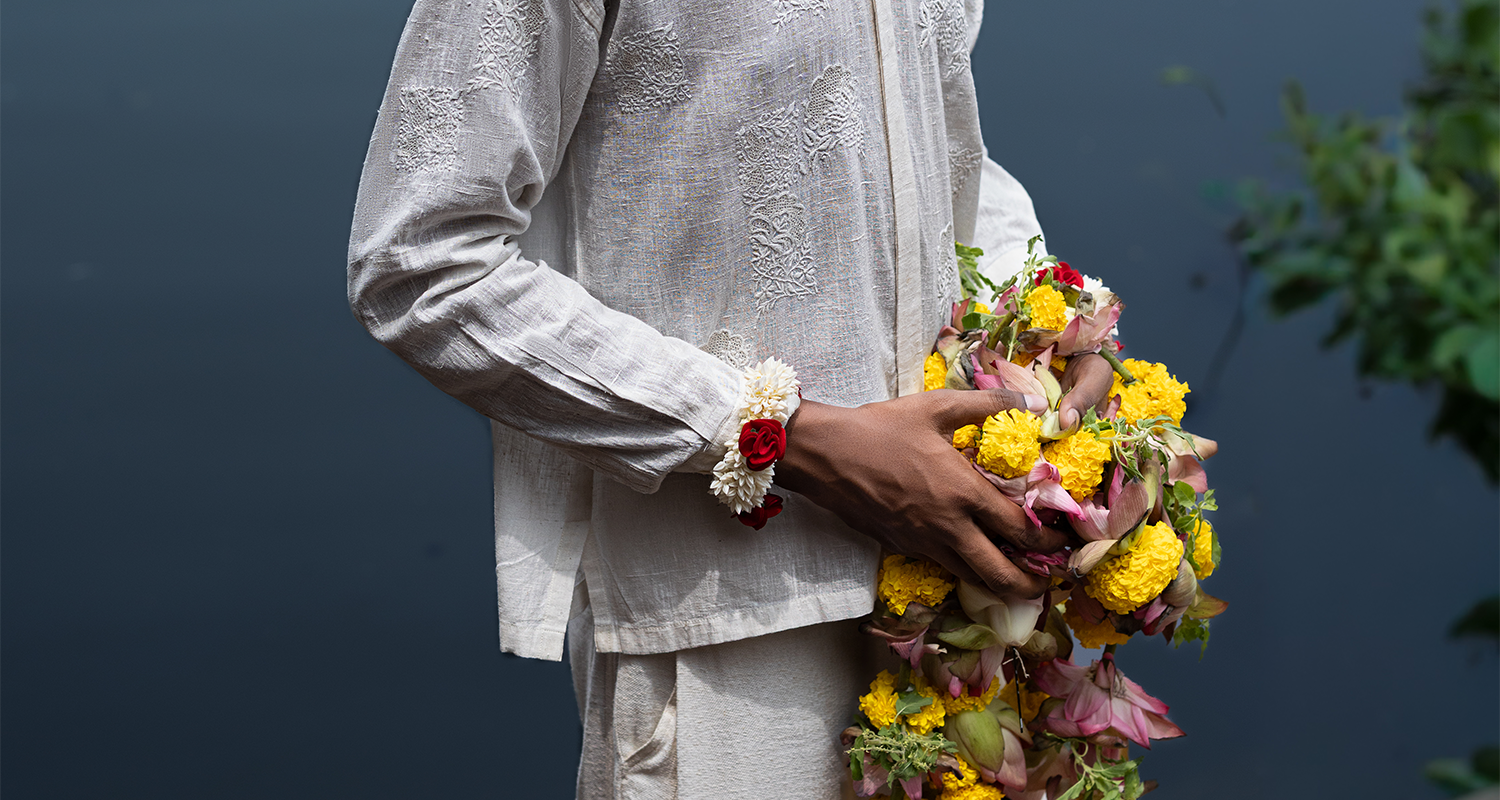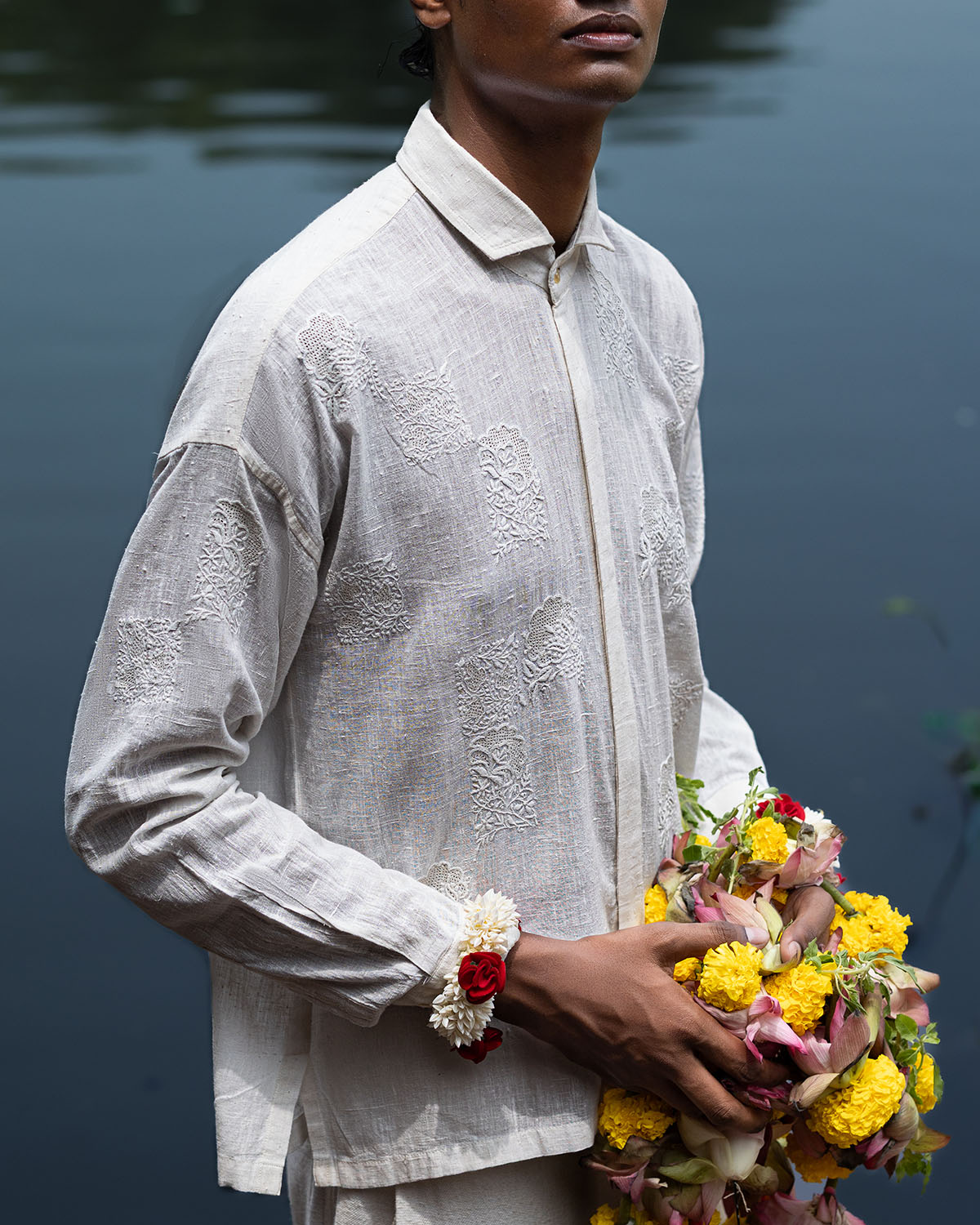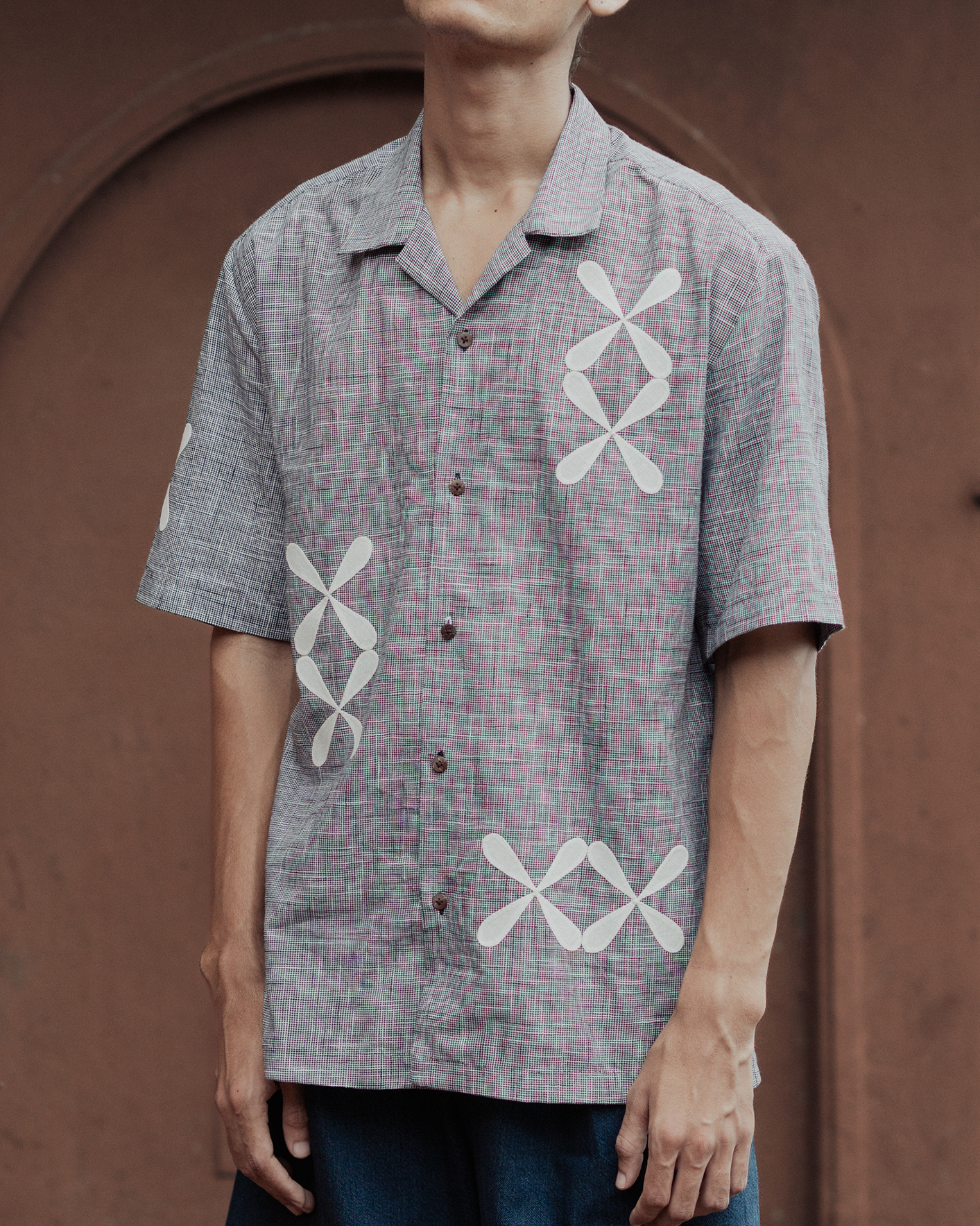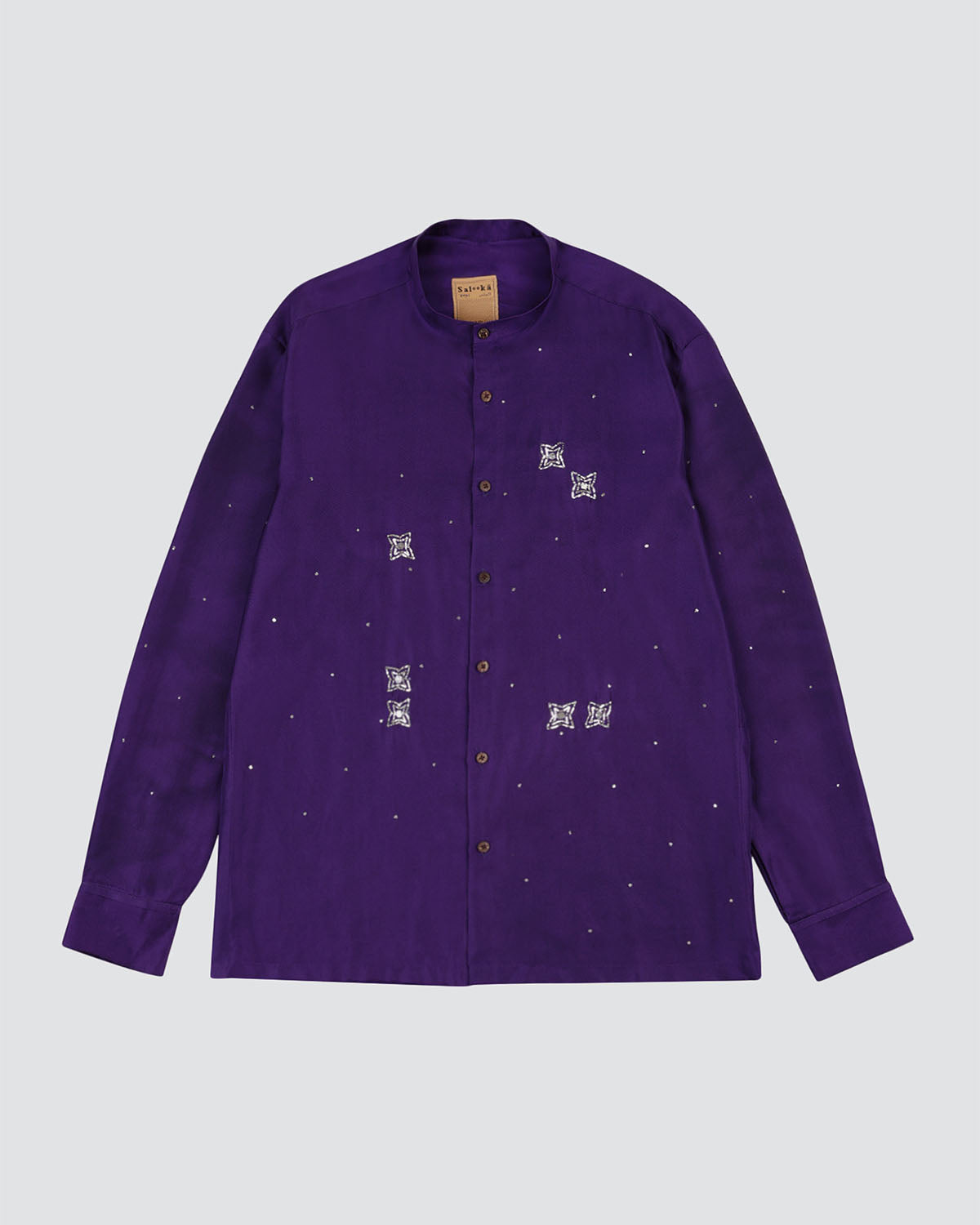Our chikankari projects started off with an idea to explore the native Awadhi embroidery on new textile bases, but it grew into something deeper every day with exposure to the local process of how it's made. What started with just one shirt for Vir Das at a single chikankari centre grew into an everyday trip to the narrow streets of Lucknow — streets that smelled of neel (indigo) and gond (gum), and echoed with the sounds of blocks and stamps on wooden takhats (platforms) covered with mulmul (fine cotton). Every trip to the chhapai (printing) centres led us to understand the depth of the process and how much history it holds — and it's true that chikankari slowly grew on us.
CRAFT DROP 01: Restoring What We’re Losing to Speed


















